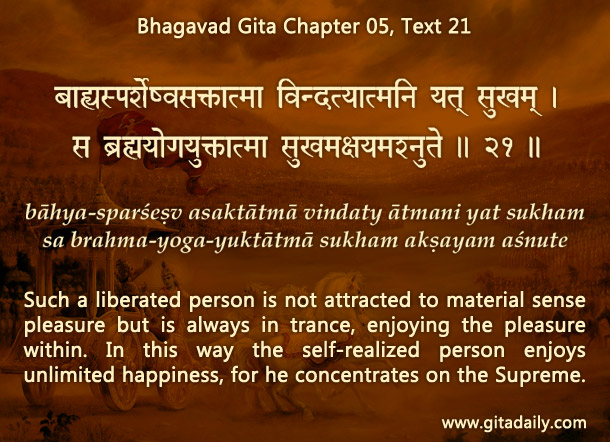For a thirsty person lost in a desert, a mirage promises the very thing they need: water. Actually however, the mirage is the very thing they need to avoid to get to water, which is to be found elsewhere.
A similar dynamic applies to our search for happiness in this world, which is akin to a desert. We crave for happiness, which we feel is our inalienable right. The many sense objects in this world promise immediate and immense pleasure. Exaggerating their promise, today’s media and culture parade before our eyes images of sense objects shaped and dressed in tantalizingly appealing forms. Contemplation on such images triggers within us a forceful craving for visually consuming them. And that consumption increases the craving, which in turn increases the consumption. This combination of craving and consumption propels our consciousness down to wantonness and hedonism. Eventually, we are left dissatisfied and frustrated with an irresistible craving that no amount of consumption can sate. In this way, visually titillating images act like mirages – they lure us away from the joyful spiritual consciousness that is our nature as souls.
Gita wisdom explains that our eyes’ thirst for beauty, and our quest for pleasure at large, is meant to be fulfilled in the all-attractive form of Krishna. While his beauty is accessible from any level of consciousness, it becomes increasingly and perennially relishable at the spiritual level of consciousness. There, we delight in an ocean of happiness when our consciousness is absorbed in Krishna. Tragically, we neglect or even reject this ocean when allured by the mirage of sensual titillation.
Protecting us from such self-sabotage, the Bhagavad-gita (05.21) reminds us that if we turn away from externals and seek pleasure within, we will find unlimited happiness at the spiritual level.
To know more about this verse, please click on the image
Explanation of article:
Podcast:


To seek a spiritual occean is a very difficult task,so commoners always adhere to sensual tiltillation